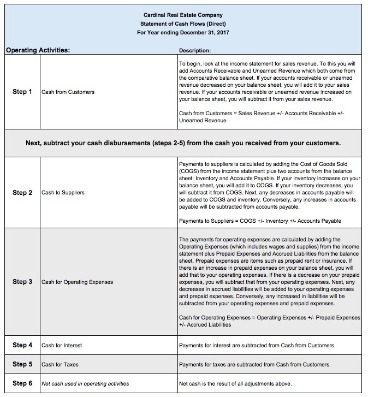Currently Empty: 0.00zł
How To Adjust Payroll Liabilities In Quickbooks Online

Utilizing the software’s features for payroll item setup and liability management streamlines the process and enhances financial reporting capabilities. Managing and paying payroll liabilities in QuickBooks Desktop involves accurate tax calculations and streamlined payment processing, ensuring comprehensive payroll management and compliance with tax obligations. Leveraging the software’s features streamlines the payment process and enhances financial reporting capabilities. Configuring payroll liabilities in QuickBooks Online entails the setup of tax forms, ensuring accurate financial reporting, and adherence to compliance requirements.
Payment Options
Please note that adjusting payroll liabilities should be done with caution, as it can have a direct impact on adp run 2020 your financial statements and tax reporting. It is recommended to consult with a professional bookkeeper or accountant if you are unsure about the adjustments you need to make. When managing payroll in QuickBooks Online, it is important to ensure that payroll liabilities are accurately recorded. However, there may be instances where adjustments need to be made due to various reasons, such as correcting an error or reflecting changes in employee benefits. It involves setting up various deduction types such as taxes, retirement contributions, health insurance, and other withholdings, ensuring accurate and consistent payroll processing. Expense categorization is critical for aligning costs with the appropriate accounts and tracking spending.
In QuickBooks Online, users have the advantage of leveraging seamless online payment options, offering the convenience of direct deposit and automatic payment processing. QuickBooks Online provides a more streamlined and intuitive user interface, making it easier to navigate through the payroll liabilities process. In contrast, QuickBooks Desktop offers a more traditional interface, which may require additional time to familiarize oneself with.
Step 4: Review and Verify Adjustments

QuickBooks Online provides user-friendly options for these adjustments, allowing businesses to customize their payroll settings efficiently. It is critical to consider the implications of these changes, including potential impacts on employee paychecks, tax filings, and financial reporting. By using QuickBooks Online for creating payroll liabilities checks, businesses can streamline their payment processing procedures, ensuring that employees are paid in a timely and organized manner. The payment options differ, with QuickBooks Online offering more flexibility in methods such as direct deposit and e-payment, while QuickBooks Desktop primarily focuses on check payments. Regarding tax deadline management, QuickBooks Online‘s automated reminders and filing assistance stand out, whereas QuickBooks Desktop requires more manual tracking. These disparities contribute to the distinct experiences users encounter when managing payroll liabilities in each platform.
How to Change Payroll Liabilities Schedule in QuickBooks Desktop?
The electronic payment processing feature enables you to conveniently pay employees and taxes online, saving time and reducing manual errors. QuickBooks Online’s tax deduction capabilities automatically calculate and withhold the required taxes, simplifying the complex task of payroll taxation. Once inside the payroll setup, it is important to review the tax categories to ensure they accurately reflect the current tax regulations and any applicable changes. Updating the withholding rates is crucial to ensure compliance with the latest tax brackets and calculations. In this comprehensive guide, we will explore how to adjust payroll liabilities in QuickBooks, QuickBooks Online, and QuickBooks Desktop.
The available payment options for settling payroll liabilities vary between QuickBooks Online and QuickBooks Desktop, influencing the efficiency of online payments and the overall processing of payroll obligations. The user interface for managing payroll liabilities differs significantly between QuickBooks Online and QuickBooks Desktop, impacting the accessibility and utilization of various payroll features. By setting up scheduled payments, businesses can ensure that their payroll liabilities are consistently funded, avoiding potential penalties or interest charges due to late payments. This also promotes financial planning and organization, as it allows for the predictable allocation of resources for upcoming tax liabilities. With detailed reporting capabilities, businesses can track and verify the accuracy of their tax payments, enhancing overall financial management and accountability. By properly setting up payroll liabilities in QuickBooks Online, you will have a solid foundation for accurate record-keeping and easy adjustments when needed.
By setting up the employee records, businesses can input vital information such as salary, hourly wages, and employee benefits. QuickBooks Online also allows for automation of transactions, where regular payroll processes such as direct deposits and tax withholdings can be scheduled and completed seamlessly. The initial step in adjusting payroll liabilities in QuickBooks Online is to identify the specific reasons or events that necessitate the adjustment, such as corrections in tax calculations or changes in employee wage withholdings. Subsequently, it is essential to navigate to the payroll setup within QuickBooks and implement the required changes, which may involve modifying bookkeeping vs accounting tax categories, updating withholding rates, or adjusting employer contribution parameters. The initial step in adjusting payroll liabilities in QuickBooks is to identify the specific reasons or events that necessitate the adjustment, such as corrections in tax calculations or changes in employee wage withholdings. Now, let’s dive into the step-by-step process of adjusting payroll liabilities in QuickBooks Online to ensure your financial records are accurate and up to date.
By setting up tax reporting parameters, businesses can accurately report payroll taxes to the relevant authorities. QuickBooks Desktop allows users to establish tax profiles for federal, state, and local tax reporting. The platform provides tools for managing tax payments, facilitating the seamless transfer of funds to fulfill tax obligations. Recording manual payments for payroll liabilities in QuickBooks payroll tax vs income tax Online enables accurate tracking of tax deposits and ensures meticulous management of financial records.
- This will enable you to maintain accurate financial records, comply with tax regulations, and make informed decisions based on reliable payroll data.
- Adhering to these processes is crucial for maintaining compliance with tax regulations, avoiding penalties, and keeping the financial records accurate and up to date.
- The initial step in adjusting payroll liabilities in QuickBooks Online is to identify the specific reasons or events that necessitate the adjustment, such as corrections in tax calculations or changes in employee wage withholdings.
- The electronic payment processing feature enables you to conveniently pay employees and taxes online, saving time and reducing manual errors.
How To Adjust Payroll Liabilities In Quickbooks Online
Managing and paying payroll liabilities in QuickBooks Online involves electronic payment processing, tax deductions, and seamless record-keeping for accurate financial management. Leveraging the software’s features streamlines the payment process and ensures compliance with tax obligations. This process includes setting up tax forms such as W-2, W-3, 941, and 940, which are crucial for reporting employee wages, federal income tax withholding, and employer tax obligations.
This process necessitates a thorough review of the current payroll settings to identify areas that require modification. For example, if there are changes in tax laws, the tax categories must be adjusted accordingly to ensure compliance. QuickBooks offers options to customize withholding rates based on the latest regulations, and it also allows flexibility in adjusting employer contributions. It is crucial to consider the implications of these changes, as they may affect employee pay, tax reporting, and overall financial management. In the world of accounting and bookkeeping, managing payroll liabilities is a crucial aspect to ensure accurate financial records. QuickBooks, a widely-used accounting software, offers various tools and features to help businesses adjust, reconcile, and enter payroll liabilities seamlessly.

